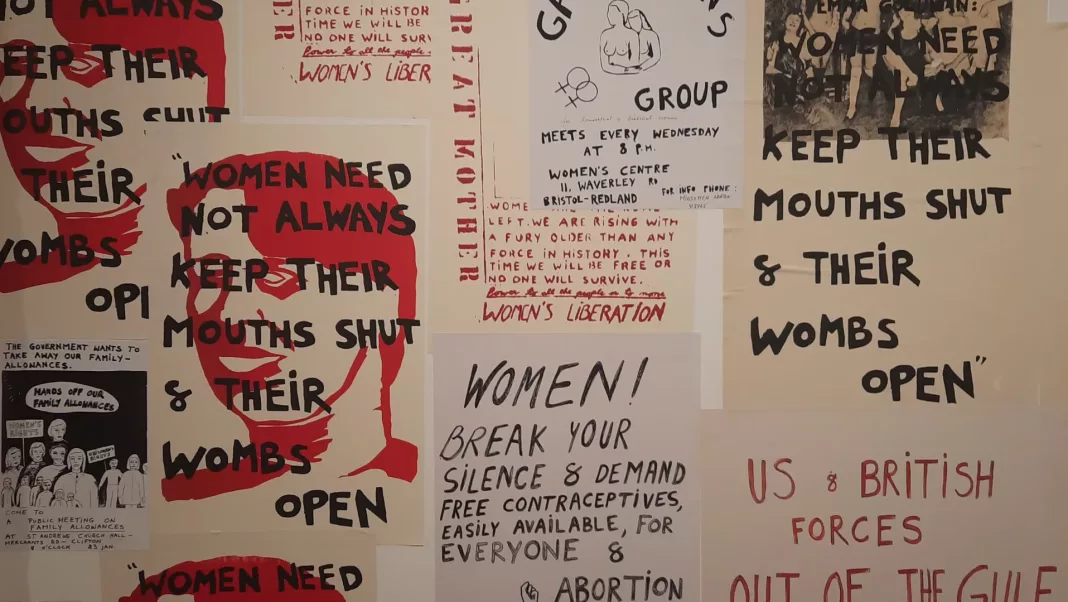Monica Sjöö: The Great Cosmic Mother.
Based on the Modern Art Oxford posters, Monica Sjöö’s activism appeared to be a driving force for social change. I, therefore, wanted to understand how her deep passion for female liberation could be communicated through her artwork and how the gallery would display such an important genre of work.
The first gallery room was like a white, empty shell, but it was Sjöö’s artwork that brought the space to life. The art installation was filled with repeated motifs and imagery of female spirituality and independence that juxtaposed the known adversities faced by women in a patriarchal society and empowered any person who entered the gallery on that day.
Sjöö’s stylistic block print letters in Back Street Abortion – Women Seeking Freedom from Oppression (1968) epitomise the hardship faced by women as a consequence of, as noted by Sjöö, ‘Medicine controlled by men’. Sjöö argues that the right to contraception and legalised abortion were not a decision of the mother. Instead, her health and bodily autonomy was determined by the male-dominated system which shaped twentieth-century health care. The grief communicated by the figures in the painting acts as a record of the voices and protests of women in the past, like Sjöö, which greatly shaped the privileges of women today. In that moment I saw Sjöö not as an independent artist, but part of a collective group of women – a generation of women – fighting for liberation and justice.
Her work was further contextualised through the use of photography and film recordings. The simplistic layout of the first gallery room is contrasted immediately by the collage of posters plastered to the wall. Sjöö’s poster Women need not always keep their mouths shut and their wombs open (1968) was scattered across the installation and encapsulated the battles faced by Sjöö and other contemporary feminists. Her political consciousness, fighting for the right to abortion and sexual autonomy were translated directly through her artwork on display. Her work felt tactile even against the wall and reflected Sjöö’s own activism as it transcended beyond the canvas.
From a recording played at the gallery, Sjöö’s activism is evident through her participation in the Women for Life on Earth Peace March at Greenham Common Women’s Peace Camp. Footage from the Greenham Common protests, starting on 27 August 1981, reveals how Cold War tensions were a direct and ‘dangerous expression of masculinity’ as noted by Niamh Walker. Military irresponsibility was challenged by the position of mothers protesting against the use of nuclear weapons. The women did not just defend their own position, but that of their children and of families that had no say in the war that was unfolding. Sjöö communicates this through her Women for Life on Earth banner, which she is also depicted holding on a postcard at the gallery.
Monica Sjöö’s work portrays the generational and collective experiences of women from birth to motherhood. Her role and position as a woman were constantly evolving and it was these experiences that she translated to the work she created. Her title ‘The Great Cosmic Mother’ can, therefore, only begin to portray the transcendental experience of Sjöö’s art.
Photography by Taya Neilson


